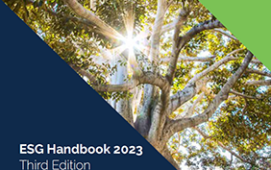Bloomberg continues to promote industry use of the Financial Instrument Global Identifier (FIGI), a free and open data standard for financial instrument identification, through the introduction of OpenFIGI.com and OpenFIGI API. The OpenFIGI.com website provides access to tools for identifying, mapping and requesting FIGI datasets, while the OpenFIGI API allows mapping from third-party identifiers to FIGIs on the fly.
The website had a soft launch in December 2015 and was made fully operational last week. Since then, over 1,500 users have registered on the site, although it is not imperative to register to use the website tools and access the open API. Information about the FIGI and functionality to download the identifiers was previously on the Bloomberg website, but is now on the separate OpenFIGI.com site – perhaps in an attempt to distance the identifier from Bloomberg. The site is maintained by the FIGI team, which includes Peter Warms, senior manager of fixed income, entity, regulatory content and symbology at Bloomberg; Richard Robinson, leader of industry initiatives and strategy in the open symbology group at Bloomberg; and Richard Young, leader of regulatory initiatives and strategy in the open symbology group.
Robinson says: “One of our goals for OpenFIGI.com and the API is to enable organisations to break through the complexities of financial instrument identification and mapping by providing a central solution of unique identifiers across all asset classes. This approach reduces cost, increases data quality and increases speed for all participants involved.”
The OpenFIGI.com website enhances functionality around the FIGI, offering live access to the identifiers and tools to allow users to search available open symbology data, access updates related to the FIGI and obtain the OpenFIGI API. The API offers mapping from third-party identifiers to the FIGI and allows users to programmatically access related open symbology metadata. Initially, Robinson expects users of the website to input symbols to discover their matching FIGIs and to use the API to automate searches or the mapping of symbols to FIGIs.
He suggests the FIGI has passed the tipping point of adoption and is in significant use across the financial industry, and says: “The final frontier is educating people on standards and helping them understand that the FIGI is a standard that has been approved by the Object Management Group.” Meantime, Bloomberg’s open symbology team continues to build out FIGI functionality on the OpenFIGI.com website and around the OpenFIGI API. It is also in the process of setting up an advisory board of chief data officers to provide guidance on the future direction of open symbology.
Subscribe to our newsletter




